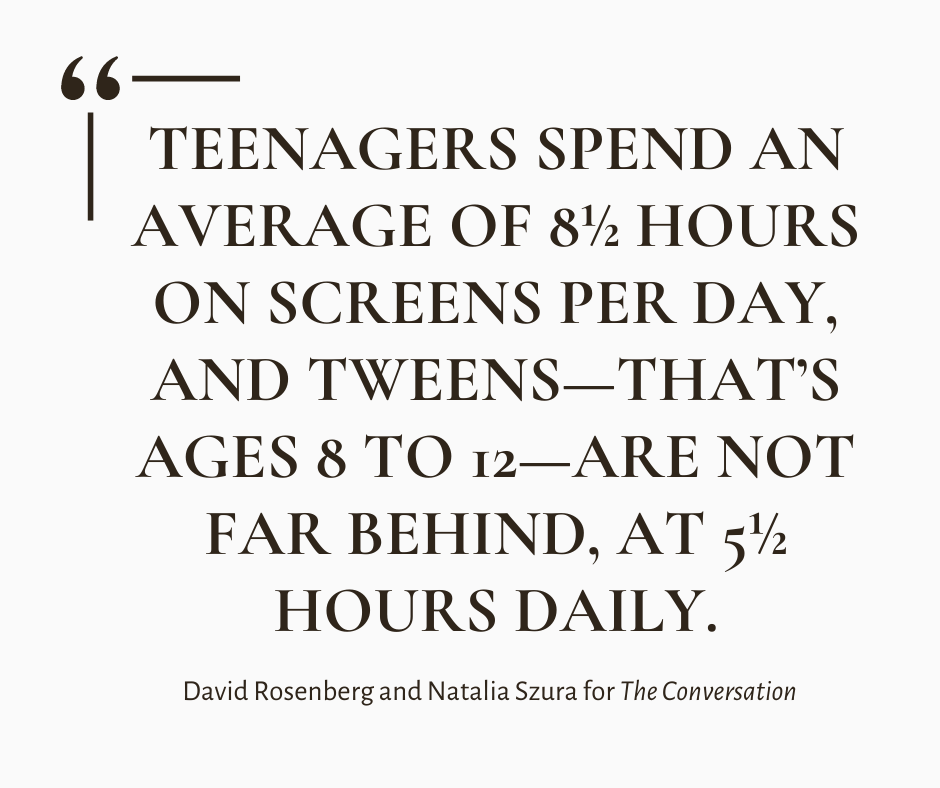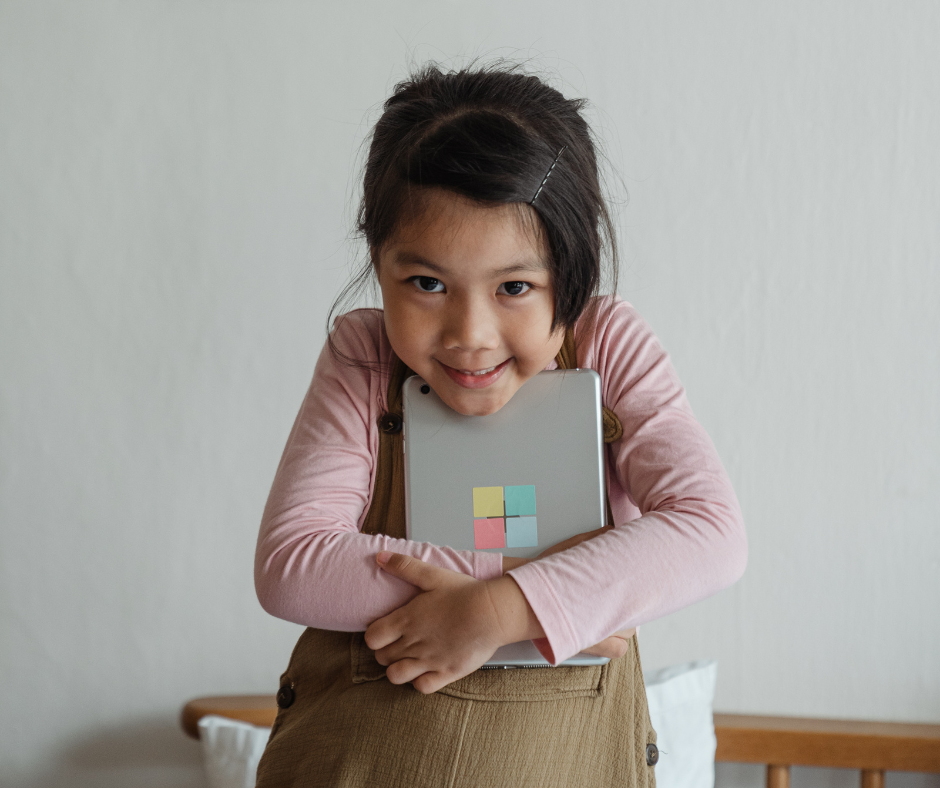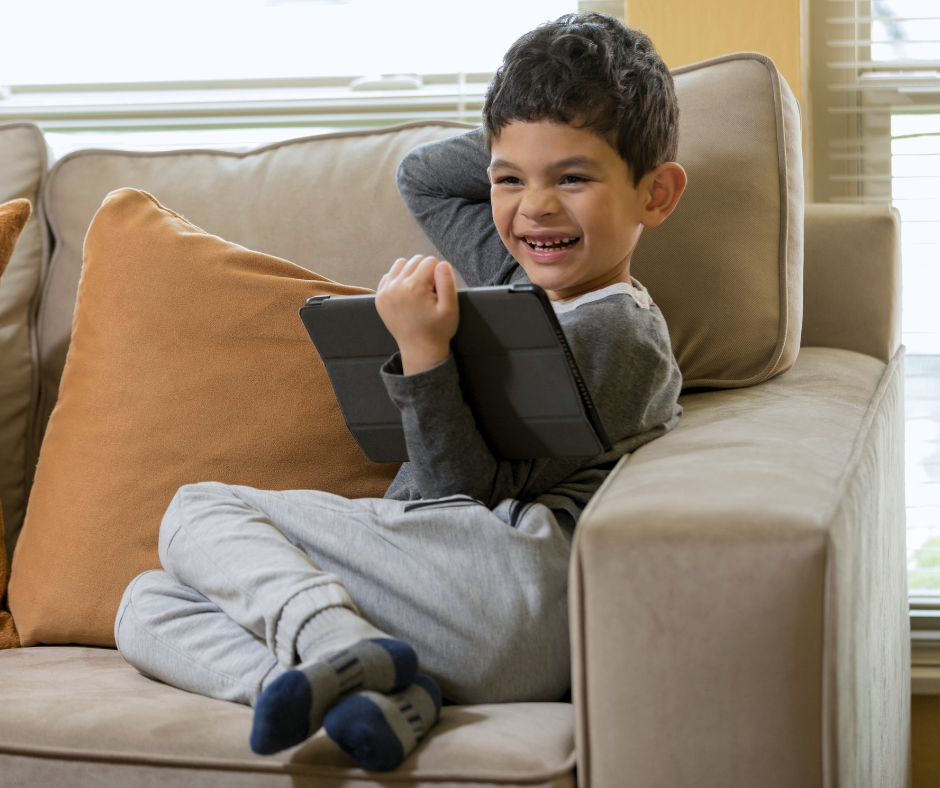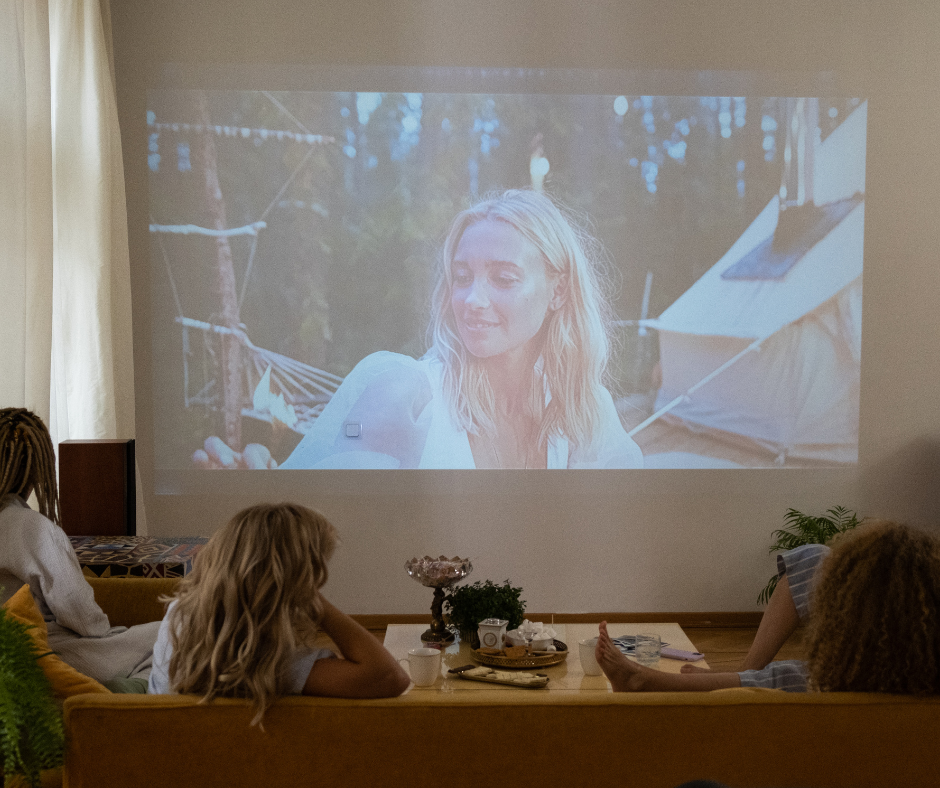
A Scary Amount of Screen Time: How to Get Kids to Do a Digital Detox
Summary
A digital detox can help kids reduce screen time, improving their sleep, mental well-being, and family relationships. Starting small, setting clear boundaries, engaging in alternative activities, and involving kids in the process are key strategies for success. Regular check-ins ensure long-term success and sustained healthy habits.
Reflection Questions
- How does my current screen time impact my daily interactions with my family?
- What non-digital activities do I enjoy but haven’t made time for recently?
- How can I model healthier screen habits for my children?
Journal Prompt
Reflect on your family’s screen habits and how they shape your daily life. Think about a recent day when screens dominated your time—what did you gain, and what did you miss out on? Now, imagine a day where screens played a minimal role. How would you spend that time differently, and how might it affect your relationships, mood, and productivity? Consider the long-term impact of making small adjustments to your screen use, and write about the changes you’d like to see in your family’s daily routine.
It’s no secret that kids today are spending a ton of time on screens—so much so that a recent study found teens clocking in over seven hours a day just on entertainment! With devices taking over our daily lives, many parents are finding it tough to strike the right balance. That’s where a kids-and-parents digital detox comes in. Now, we’re not saying you should ditch your devices completely! This digital detox is about creating healthier screen habits that leave room for real-life connections, better sleep, and all-around well-being. With our DesignDash Guide, you can make it work for your family!
How Much Is Too Much?

Between smartphones, tablets, televisions, laptops, and school computers, our kids’ digital consumption might be getting a bit out of hand. As David Rosenberg and Natalia Szura write in this 2023 article for The Conversation, “Teens spend an average of 8½ hours on screens per day, and tweens – that’s ages 8 to 12 – are not far behind, at 5½ hours daily.”
The CDC reports slightly different data, but it’s pretty consistent with Szura and Rosenberg’s findings. What’s really shocking is the recommended daily screen time allowance for kids. OSF Healthcare recommends “No more than one hour per day co-viewing with a parent or sibling” for kids between 2 and 5 years old and “No more than two hours per day, except for homework” for kids between 5 and 17.
Side Effects of Too Much Screen Time

It can be hard to take those recommendations seriously without knowing the impact of long stretches of screen time on our kids. So, let’s take a look at the side effects.
Too much screen time can sneak up on kids, leading to some noticeable side effects. For starters, spending hours glued to a screen can mess with their sleep. The blue light from phones, tablets, and computers tricks their brains into thinking it’s still daytime, which can make it harder for them to fall asleep at night. And when kids aren’t getting enough rest, they’re not just tired—they’re cranky, have trouble focusing in school, and can even struggle with their mood. It’s like a domino effect that starts with screen time and ends with a less-than-happy kid.
But the impact of excessive screen time isn’t just about sleep. It can also affect how kids interact with the world around them. When they’re constantly on their devices, they’re missing out on important face-to-face social interactions. This can make it harder for them to develop essential social skills, like reading body language or having a conversation without distractions.
Plus, when screen time replaces physical play, it can lead to less time spent moving around, which isn’t great for their overall health. So, while screens are a part of modern life, finding a balance is key to keeping kids healthy and happy.
According to the American Academy of Pediatrics…

Excessive screen time in young children, especially those under five, can lead to several developmental and health issues. This 2016 study from the AAP emphasizes that while certain educational media can benefit older preschoolers, too much screen exposure—especially without parental interaction—can negatively impact sleep, cognitive development, and social skills. The study recommends limiting screen time to one hour per day for children aged 2-5, focusing on high-quality content, and encouraging active parental involvement during media use.
A 2023 resource from the AAP explains how too much screen time, especially before bed, can seriously disrupt sleep in older kids. The blue light from screens interferes with the production of melatonin, the hormone that helps us sleep, making it harder for kids to fall asleep and stay asleep. This lack of quality sleep can lead to issues like poor concentration, irritability, and even long-term health problems. Limiting screen time, especially in the evening, is key to helping kids get the rest they need.
According to Preventive Medicine Reports…

Higher screen time is linked to lower psychological well-being in children and adolescents. Kids with more screen time reported lower levels of curiosity, self-control, and emotional stability and were more likely to experience anxiety and depression. A 2018 study published in the journal suggests that reducing screen time could improve mental health outcomes in young people.
According to Current Research in Behavioral Sciences…

A 2023 study found that too much screen time can weaken the parent-child bond by reducing the time and quality of face-to-face interactions, which are crucial for a child’s emotional and social development. The constant noise from devices like TVs can disrupt communication, leading to fewer meaningful conversations.
This lack of interaction can negatively impact a child’s behavior and mental well-being. While some screen activities can enhance family connections, especially with older children, younger kids need more direct, responsive interactions with their parents to thrive.
DesignDash Guide: How to Get Kids to Do a Digital Detox
As working parents with incredibly busy lives, it’s difficult to moderate our kids’ screen time—especially when we’re at client meetings, in the studio, making dinner, doing laundry, or trying to wind down ourselves. But kids respond to role modeling, so let’s start there.
If you want your kids to have healthy screen habits, it’s super important to lead by example. If they see you constantly scrolling through your phone, they’ll think that’s normal and might do the same. But if you show them that you can put your devices down and enjoy other activities, they’re more likely to follow suit. By managing your own screen time, you’re not just telling them what to do—you’re showing them how it’s done.
Doing a digital detox together can be a great way to both model for and engage your kids. It’s a great way to bond, break the habit of constant device-checking, and rediscover fun activities that don’t involve screens. Plus, doing it together makes it easier for everyone to stick with it, and it turns the whole process into a shared adventure instead of just another rule to follow.
Now that we’re all committed to a joint digital detox, here’s how to implement it!
Step 1: Start Small

When it comes to a digital detox, it’s best to ease into it rather than go cold turkey. Start by picking one or two small changes that feel doable for everyone, like declaring dinner time a screen-free zone.
This gives your family a chance to reconnect over meals without constant distractions from phones or tablets. Once you’ve mastered that, you can gradually introduce other screen-free times, like during morning routines or while riding in the car together. Small, consistent changes make the detox feel more manageable and less like a punishment.
Step 2: Set Clear Boundaries

Clear boundaries are key to making a digital detox successful without turning it into a daily struggle. Setting rules like “no screens an hour before bed” helps everyone wind down and get better sleep, which is especially important for growing kids.
You can also introduce time limits for how long screens can be used during the day. Parental controls can be your best friend here—set them up to automatically turn off devices after a certain amount of time, so you don’t have to be the bad guy enforcing the rules all the time.
Step 3: Engage in Alternative Activities

One of the biggest challenges of a digital detox is figuring out what to do with all the extra time. This is where alternative activities come in. Encourage your kids to explore hobbies that don’t involve screens, like playing outside, getting creative with arts and crafts, or diving into a good book.
You can also plan family activities that everyone enjoys, like board games, cooking together, or going on nature walks. The goal is to show that life beyond screens can be just as fun and fulfilling, if not more so.
Step 4: Involve Kids in the Process

Getting your kids on board with a digital detox is much easier when they feel like they have a say in it. Involve them in creating the plan by asking for their input on rules and activities.
Maybe they’ll suggest a family movie night where you all watch something together rather than everyone watching their own shows separately, or they might come up with new screen-free activities to try. When kids feel like they’re part of the decision-making process, they’re more likely to embrace the changes and even get excited about them.
Step 5: Use Tech to Your Advantage

While it might sound counterintuitive, technology can actually help you manage a digital detox. Plenty of apps and tools are designed to monitor screen time and help you set limits. These tools can send reminders when it’s time to put the devices away or even lock screens after a certain amount of use.
It’s like having a built-in accountability partner that helps everyone stick to the detox plan without constant nagging. Plus, it can turn the detox into a fun challenge to see who can reduce their screen time the most.
Step 6: Create Tech-Free Zones

Creating tech-free zones in your home is a great way to create spaces without screens. Designate areas like the dining room, bedrooms, or even the living room during certain times as screen-free zones.
This helps establish a physical separation between tech and other parts of life, encouraging more face-to-face interactions and relaxation. When the whole family respects these zones, it reinforces the idea that not every moment needs to be filled with a screen and that there’s value in unplugging, even for a little while.
But What If My Kids Just Aren’t About It?

Let’s be real—most kids aren’t going to jump for joy at the idea of a digital detox. You might hear complaints like, “But I need my phone to talk to my friends!” or “What am I supposed to do if I’m bored?” Address these objections with empathy by acknowledging their feelings and offering alternatives.
Fuel your creative fire & be a part of a supportive community that values how you love to live.
subscribe to our newsletter
*please check your Spam folder for the latest DesignDash Magazine issue immediately after subscription

For example, suggest having a friend over in person instead of texting or planning some fun, hands-on activities that keep boredom at bay. The key is showing them that life without screens isn’t as bad as they think.
Offer Positive Reinforcement

Who doesn’t love a little reward for sticking to a plan? Positive reinforcement can work wonders in making the digital detox more appealing. You could set up a reward system where your kids earn points or treats for following the detox rules.
If they stick with the plan for a week, maybe they get extra time doing their favorite non-screen activity or a special outing. Research shows that positive reinforcement encourages desirable behavior, so turning the detox into a fun challenge with rewards can make it a lot easier to get everyone on board.
Maintain Open Lines of Communication

Keeping the lines of communication open is crucial when implementing a digital detox. Take the time to explain to your kids why you’re doing this and how it can benefit everyone. Listen to their concerns and be open to making adjustments if something isn’t working.
The more you involve them in the conversation, the more they’ll understand that this isn’t just a random rule—it’s something that can actually make life better. Plus, when kids feel heard, they’re much more likely to cooperate and even get excited about the whole idea.
Final Thoughts: Keeping Your Kids on Track After the Detox Ends

Turning a digital detox into a long-term lifestyle change doesn’t have to be a chore. The key is to build sustainable habits that stick. Encourage your kids to find a balance between screen time and other activities they enjoy. Make it a routine to have regular screen-free times or days where everyone in the family unplugs. By making these habits part of your everyday life, the detox becomes less of a one-time challenge and more of a natural way to keep things balanced.
Regular family check-ins can keep the momentum going after a digital detox. Gather everyone together every few weeks or months to chat about how the detox is going. Are the rules working? Does anything need to be tweaked? These meetings are a great way to ensure everyone’s on the same page and address any new issues. Plus, it’s an opportunity to celebrate the progress you’ve all made and maybe even set some new goals.
By cutting back on screen time, you’re helping your kids rediscover the joys of real-life interactions and outdoor play, all while setting the stage for a balanced lifestyle. So, don’t stress if it doesn’t happen overnight. Be patient, keep it fun, and remember that every little step counts. You’ve got this, and your family will be stronger and happier for it!








